
Hi Gang…
What do you do if you “invent” the market for a new type of product like Bill Tritt did for sports car bodies made out of fiberglass?
Well…. one of the activities that you have to undertake is to teach your prospective customers how to complete the very thing you’re trying to get them to buy – a fiberglass bodied sports car.
After all, you’re selling them a car – not a body. It’s just they’ll be the ones building it, and you have to figure out how to support this new business endeavor.
In 1952, materials for showing people how to build your own car were few and far between, and the first book showing how to do this didn’t come out until August 1952. Click here to review the history of fiberglass books that show how to build your own body, car, frame etc…
When you bought a fiberglass body in 1952, very little information was available. At best you got a one page instruction sheet – at worse – a pat on the back and encouragement to read some of the articles on the newstands printed in ’52 on how to do this.
So in creating this new set of materials needed to build your own car, Bill Tritt of Glasspar would once again be recognized as “first” in his field. Today’s story focuses on the earliest known set of instructions for building your own complete, driveable, ground-pounding Glasspar G2 sports car – and it’s just one page in length. It is, though, printed on both sides and is 11” x 17” in size.
This is what guided young men on how to build their own sports car – from soup to nuts. They were a brave bunch, indeed. Can you imagine the guys of yesterday looking at a typical instruction manual for a modern cell phone? I can’t either.
Remember….the average skill set / ability / experience that a teenager brought to the table in the early ’50s was completely different than today.
“Hands-on” experience was the rule – not the exception. So while one page might seem scant to us today, it probably wasn’t a bad start for these guys – especially because cars were a bit simpler then.
But one page is that – just one page. Hats off to the men who built these cars back then, and I dedicate today’s story in their honor.
Let’s look at this instruction sheet used by Glasspar from 1952 thru 1954.
Front Side of Instruction Sheet:
Only two paragraphs of information are shown along with two pictures of the Alembic I Glasspar G2 Sports car. Here’s what the paragraphs say:
It is necessary that the chassis be modified from 99” to 102 “ wheelbase, preferably 101”. It is also necessary that the motor be moved aft approximately 21” and lowered to a road clearance of approximately 7”, thereby giving you a much lower center of gravity and weight distribution. This, then, will increase the ease of steering as the excess weight will be removed from the front axle. The body is designed to take a tread of 55” to 58”.
The body comes with one coat of prime paint. However, some sanding and glazing will perhaps be necessary before final painting. Also included are the body mounting brackets, instrument panel mounting brackets, firewall mounting brackets, recess for 1948 Pontiac Tail lights and brackets for General Motors sealed beam headlight assembly. Wheel wells, windshield frames, grill, door with hinge and latch, and hood with hinge and latch are included.
Back Side of Instruction Sheet:
The back side of this flyer shows the earliest known sketches on modifications and measurements needed to build a chassis and firewall for supporting a Glasspar G2 body. The frame sketch below is not a Shorty Post frame. This wasn’t available until later in ’52 and was shown in the next set of instructions printed by Glasspar which we’ll cover in a future story here on Forgotten Fiberglass.
Summary:
This is the earliest known instruction sheet produced by any fiberglass sports car body manufacturer. Several points of information converge to help identify it as such:
- Only the Alembic 1 G2 is shown
- The hardtop made for the Alembic 1 in late ’51 / early ’52 was not yet a option offered by Glasspar – it would be available in the “near” future (late ’52)
- The frame sketches do not yet show the “Shorty Post” frame which became available in August ’52 to customers. This would be the next important change in “build” materials from Glasspar and will be covered in a future story concerning Glasspar G2 “build” instructions
- And Bill Tritt confirmed the date of this instruction sheet, as well 🙂
Hope you enjoyed the story, and until next time…
Glass on gang…
Geoff
——————————————————————-
Click on the Images Below to View Larger Pictures
——————————————————————-
- Just Who Was This Guy Taking A Picture Of? Perhaps Someday We’ll Find The Missing Picture….
- Here The Alembic 1 Is Being Shown in Philadelphia in February 1952.
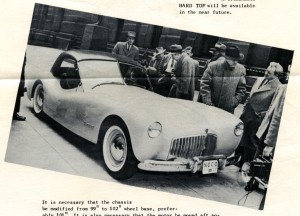
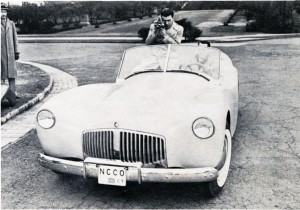
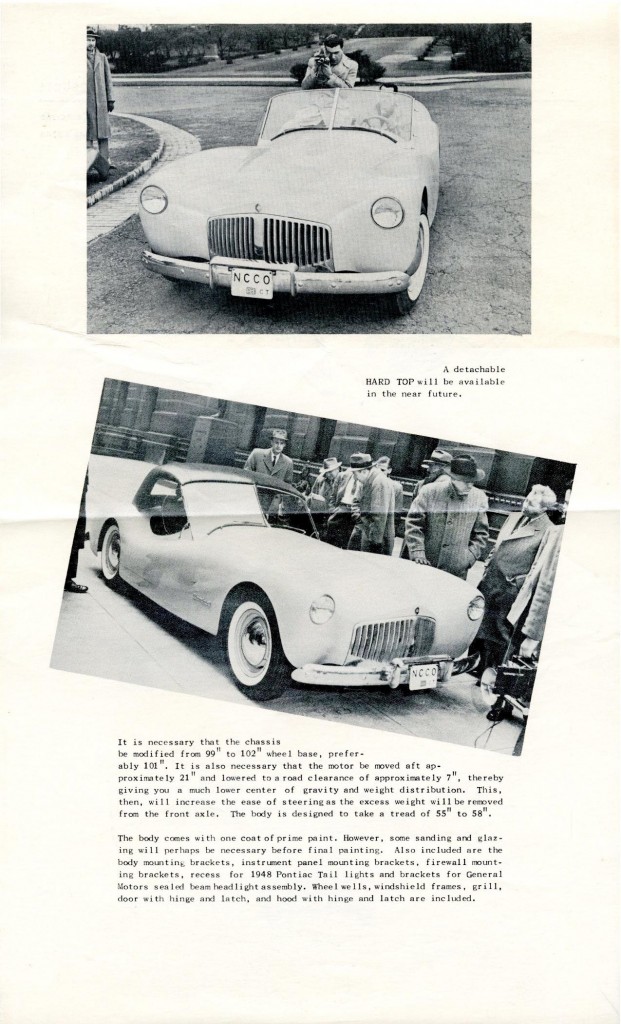
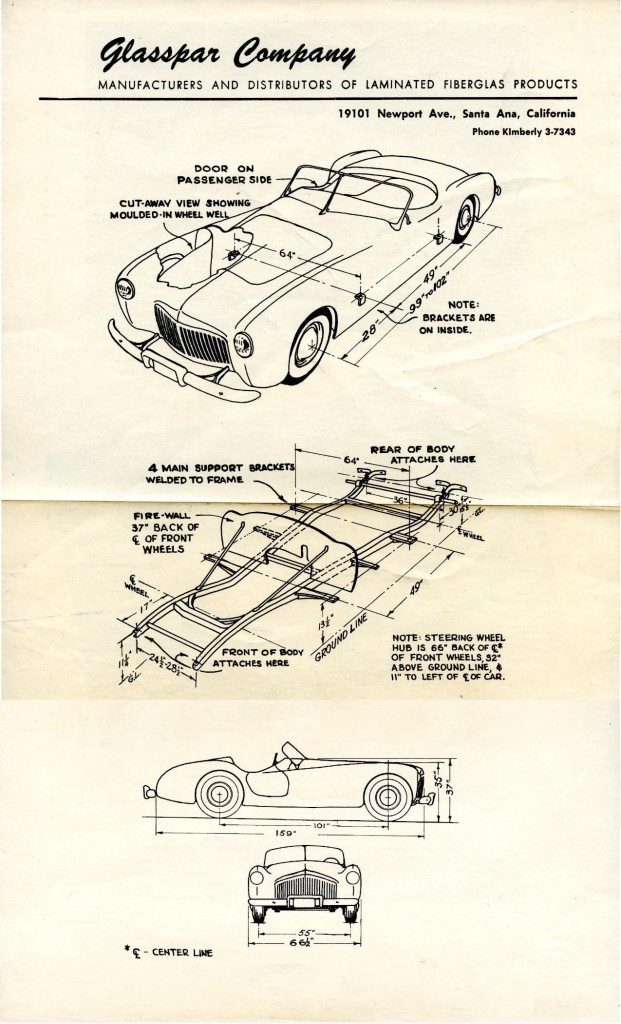

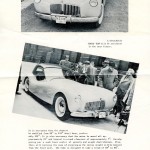
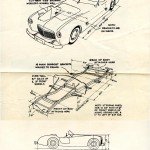



i have a g2 and would like to build new chassis also needs new windshield have had it for about 40 years time to restore like to hear from you thanks
where are you located , I am in upper Michigan and wonder if your car is one I brought back from s calif in the 80s
I’m the visitor from Hemet, Ca. I guess because I’m not signed in to the website, just going through my emails and hitting the hyperlink.
Thanks for the great info. Geoff, I was wanting to get these detentions for my restoration.
Regards, Dennis Gerdes in Idyllwild, California 92549